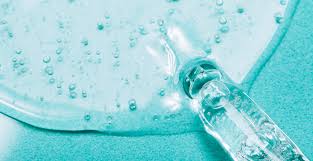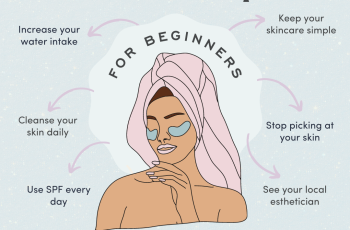
Can I Mix AHA with Azelaic Acid? A Complete Guide for Smart Skincare Layering
Azelaic acid might still feel like a mystery to some, but it’s quickly gaining ground as a dermatologist-approved multitasker.
It’s quietly become a skincare cult favorite, often found in dermatologist-prescribed treatments or niche brands.
If you’re new to this ingredient or wondering if it plays well with alpha hydroxy acids (AHAs), you’re in the right place.
In this post, we’ll answer the question: Can you mix AHA with azelaic acid?
We’ll also explore what to avoid when using AHAs and how azelaic acid fits into your routine.
Let’s dive into the science and strategy of combining these two powerful ingredients.
What Is Azelaic Acid and Why Is It So Popular?
Azelaic acid is a naturally occurring acid derived from grains like barley, wheat, and rye.
It’s known for its antibacterial, anti-inflammatory, and exfoliating properties.
Used regularly, it can reduce redness, acne, hyperpigmentation, and rosacea symptoms.
Unlike some harsher acids, it’s often well tolerated by sensitive skin.
This makes it ideal for anyone dealing with breakouts, dullness, or uneven tone.
Can You Use Azelaic Acid with AHA?
Yes, you can mix azelaic acid with AHA—and they can work really well together.
Azelaic acid is known to be a gentler acid that complements stronger ingredients.
AHAs like glycolic acid and lactic acid help exfoliate the skin’s outer layer.
Combining them helps boost cell turnover, improve texture, and fade dark spots.
Both ingredients work by encouraging skin renewal, but at different depths.
While AHAs work on the surface, azelaic acid goes deeper, treating inflammation and bacteria.
Using them together may mimic the effect of more potent ingredients, like tretinoin, but with fewer side effects.
However, it’s important to introduce them slowly if you’re new to active ingredients.
Start by using each on alternate nights, then progress to layering with caution.
Always listen to your skin—if irritation occurs, scale back and hydrate.
When Should You Avoid Mixing AHAs with Other Ingredients?
AHAs are effective exfoliants but can become too harsh when combined with the wrong actives.
Here are some ingredients you shouldn’t mix directly with AHAs:
1. BHAs like Salicylic Acid
Combining AHA and BHA may overwhelm the skin, especially if it’s sensitive.
AHAs work on the surface, while BHAs penetrate deeper into oil-filled pores.
Use them on alternate days or in separate routines (e.g., AHA in the morning, BHA at night).
2. Retinol (Vitamin A)
Retinol speeds up cell turnover and can cause dryness or irritation on its own.
Pairing it with AHA can amplify these effects and damage your skin barrier.
If you use both, apply AHA in the morning and retinol at night, or alternate nights.
3. Vitamin C (Ascorbic Acid)
Vitamin C is mildly exfoliating and can clash with AHAs, leading to irritation or over-exfoliation.
Stick to using vitamin C in the morning, and reserve AHAs for evening use.
Can You Mix Azelaic Acid with Niacinamide?
Yes—azelaic acid and niacinamide are a perfect pairing in skincare.
Niacinamide is a humectant and barrier booster, while azelaic acid targets acne and pigmentation.
Together, they hydrate, calm, and support a healthy skin barrier.
Apply azelaic acid first, followed by a niacinamide serum or cream.
This sequence helps reduce the risk of dryness or tightness from azelaic acid.
They’re both gentle enough to be used twice a day, even by sensitive skin types.
Can You Use Azelaic Acid with Glycolic Acid?
Yes, you can. In fact, azelaic acid + glycolic acid is a highly effective combo.
It’s ideal for those who want the benefits of retinoids but need something less irritating.
Glycolic acid exfoliates the top layer of skin, helping to improve product absorption.
Azelaic acid then works below the surface to reduce bacteria, redness, and inflammation.
Used together, they leave skin feeling smoother, clearer, and more radiant.
Start by using glycolic acid two to three times per week and layering azelaic acid on top.
Make sure your skin is fully dry before applying azelaic acid to prevent sensitivity.
Where Does Azelaic Acid Fit in Your Skincare Routine?
Apply skincare products from thinnest to thickest consistency.
Azelaic acid is usually found in gels, serums, or light creams.
Here’s a simple routine for layering:
Cleanser – Start with a gentle cleanser suited for your skin type.
Toner – Use a hydrating toner or exfoliating toner if needed.
Exfoliant – Apply glycolic acid or another AHA if using.
Azelaic Acid – Apply a pea-sized amount across your face.
Serums – Use serums like niacinamide or peptides.
Moisturizer – Lock in hydration with a nourishing moisturizer.
SPF (AM only) – Always finish your morning routine with SPF 30 or higher.
Can You Use Azelaic Acid Every Day?
Yes, azelaic acid is safe for daily use, even twice a day if your skin tolerates it.
It’s much gentler than other acids and builds skin tolerance quickly.
If you’re just starting, use it once a day for a week and observe how your skin reacts.
Many people with rosacea, acne, or pigmentation issues use azelaic acid daily.
It gradually clears the skin without causing excessive dryness or sensitivity.
Pair it with hydrating ingredients to keep the skin barrier healthy.
Can Azelaic Acid Cause Breakouts?
Yes, azelaic acid can temporarily cause breakouts, but it’s usually a sign of purging.
Purging occurs when an active ingredient speeds up cell turnover, pushing out clogged pores.
You may see small bumps or whiteheads, especially in acne-prone areas.
This phase usually lasts 2 to 4 weeks and is a positive sign that the product is working.
If breakouts last longer or become painful, consult a dermatologist to rule out irritation.
Stay consistent, and you’ll likely see smoother, clearer skin with time.
Should You Apply Moisturizer After Azelaic Acid?
Yes, always apply a moisturizer after azelaic acid, especially if your skin feels dry or tight.
Azelaic acid can be slightly drying, so sealing it in with a moisturizer helps maintain hydration.
Look for moisturizers containing ceramides, glycerin, or squalane to support the barrier.
Moisturizer also helps buffer other active ingredients, making your routine more tolerable.
You can follow with facial oils at night or sunscreen in the morning.
What Results Can You Expect from Using Azelaic Acid and AHA Together?
When used consistently, azelaic acid and AHAs can help:
Brighten skin tone
Reduce acne and blackheads
Smooth texture and refine pores
Fade dark spots and post-acne marks
Minimize redness and inflammation
You’ll start noticing visible results in 4 to 6 weeks, with continued improvement over time.
Just remember to always wear sunscreen, as AHAs can increase sun sensitivity.
Tips for Safely Using AHA and Azelaic Acid
Introduce one product at a time to monitor skin reactions
Use on alternate days initially to prevent irritation
Avoid layering with retinol, salicylic acid, or pure vitamin C
Hydrate your skin well and use a barrier-repairing moisturizer
Always apply sunscreen when using acids during the day
Final Thoughts: Can You Mix AHA and Azelaic Acid?
Yes, you can mix azelaic acid with AHA—and it can be a powerful combination when used correctly.
It’s all about smart layering, proper timing, and listening to your skin’s response.
Used together, these ingredients can help you achieve a brighter, clearer, and more even complexion.
Still unsure how to build your routine?
Consult with a dermatologist, especially if you have underlying skin conditions or sensitivity.
And for more expert skincare tips, follow us on Instagram for product guides, tutorials, and daily advice.


